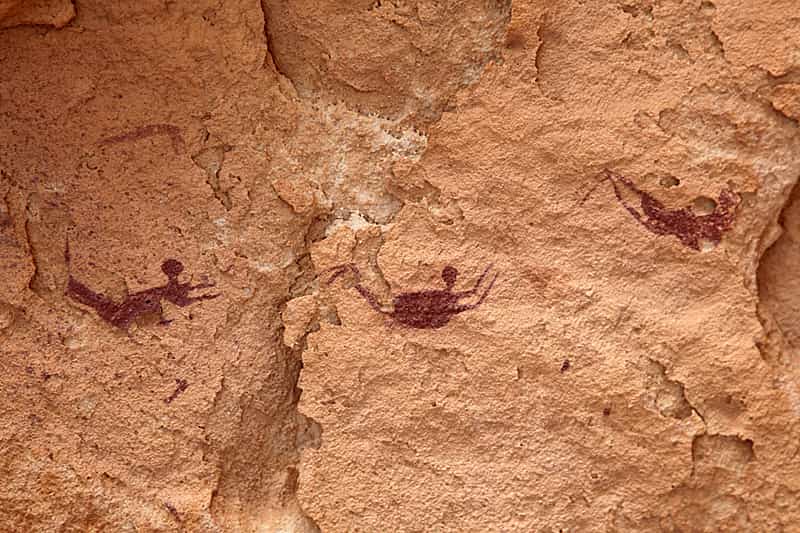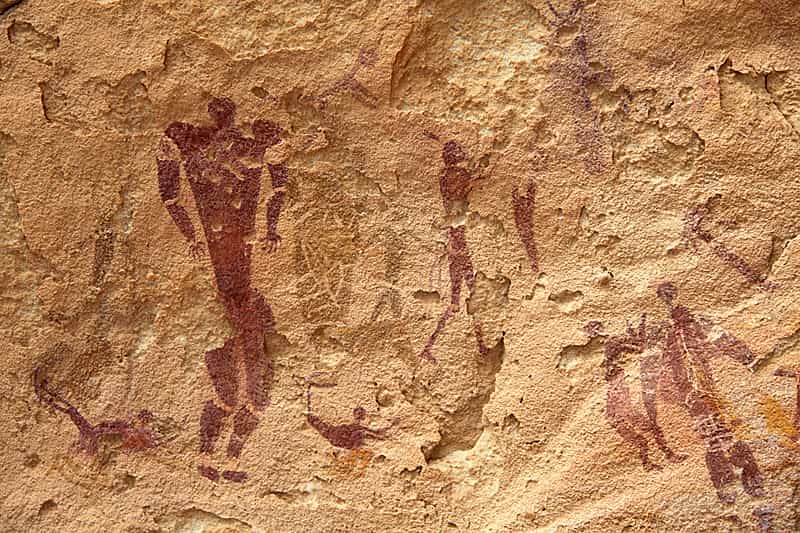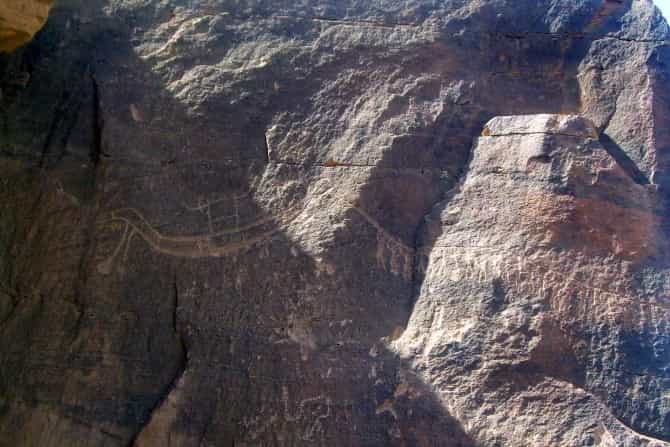10,000 years prior to the construction of the pyramids, a narrative of unknown antiquity unfolds amidst the rock formations of Egypt.
Familiar to many are the renowned pyramids of Egypt, adorned with captivating hieroglyphics and a distinctive artistic style evident in the paintings adorning the temples and tombs of the Nile Valley.
Yet, preceding the unification of Egypt under pharaonic rule, there existed a cadre of artists whose works remain largely obscured from public consciousness.
Resonant of the cave art unearthed in Europe, the earliest depictions of Egyptian art transport us to a world starkly distinct from the one typically associated with the region.
Giraffes, antelopes, lions, boats, and even figures engaged in the act of swimming adorn the rocky surfaces, spanning epochs from the Paleolithic to the Neolithic, and serving as a link to the cultural heritage of the pharaohs.
Swimmers amidst the Desert Sands
In 1933, Hungarian explorer Lázló Almásy made an unprecedented discovery while traversing the Gilf Kebir plateau in southwestern Egypt, nestled amidst the expanse of the Sahara.
Venturing into a cave, Almásy illuminated the darkness with his torch, revealing an enigmatic tableau etched upon the walls. There, amidst the arid expanse, were cave paintings depicting what appeared to be people swimming.
What significance lay behind these ancient depictions, concealed within one of the most inhospitable environments on Earth? Such questions linger, inviting exploration into the mysteries veiled within Egypt’s forgotten artistic legacy.
Certainly, the artistic expressions discovered within the depths of time predate even the Sahara’s transformation into the desert landscape we recognize today. Nevertheless, amidst Egypt’s array of awe-inspiring wonders such as temples, pyramids, and tombs, these seemingly out-of-place swimmers garnered little attention until 1996.
The catalyst for renewed interest came with the depiction of a cave in the acclaimed film “The English Patient,” which garnered multiple Oscars and sparked curiosity that drew throngs of tourists to what became known as the Swimmers’ Cave.
Public fascination often rouses the slumbering interests of scientific inquiry. It was during this period that protective measures were implemented to safeguard the delicate paintings, subsequently dated to an age surpassing 10,000 years.
In unraveling the enigmatic imagery, various studies posit that the Sahara was once a verdant expanse, teeming with life and dotted with lakes, where ancient societies sought sustenance amidst abundant flora and fauna.
While theories abound regarding the symbolic significance of the paintings – depicting souls adrift in the primordial waters of the ancient Egyptian concept of Nun – the prevailing notion suggests a narrative intent, offering glimpses into the realities of bygone eras.
The prehistoric legacy of the Sahara and the Nile
The phenomenon of ancient artistry extends far beyond solitary instances. In Egypt, a diverse array of rock art spans both the chronology and geography of Northeast Africa.
In close proximity to the renowned Cave of the Swimmers, the discovery of the Cave of the Beasts in 2002 unveiled paintings dating back approximately 7,000 years – a millennium preceding the Sahara’s desertification, when life still flourished amidst antelopes, ostriches, and giraffes, as depicted in the cave’s intricate artwork.
In 2011, a research team unearthed even older rock works, shedding light on North Africa’s Paleolithic heritage. Dirk Huyge and his colleagues meticulously dated petroglyph panels discovered at Qurta in the Nile Valley to a minimum age of 15,000 years.
Further revelations emerged in 2015, when a team from the University of Bonn unearthed hunting scenes at Qubbet el-Hawa near Aswan, dating back to the 4th millennium BC.
Among these preserved motifs, one particular scene captivates attention – a depiction of a boat being towed by 25 men, evoking the possibility of a ritualistic procession intertwined with the ancient beliefs of Egypt, reminiscent of the sacred boats that once traversed the Nile.
The rock art of Egypt serves as a vast gallery, housing hundreds of scenes etched into the stone, largely unknown to the general public yet mesmerizing in their distinctive style – a departure from the canonical artistry associated with the era of the pharaohs.
Source: Fran Navarro, Muy interesante










